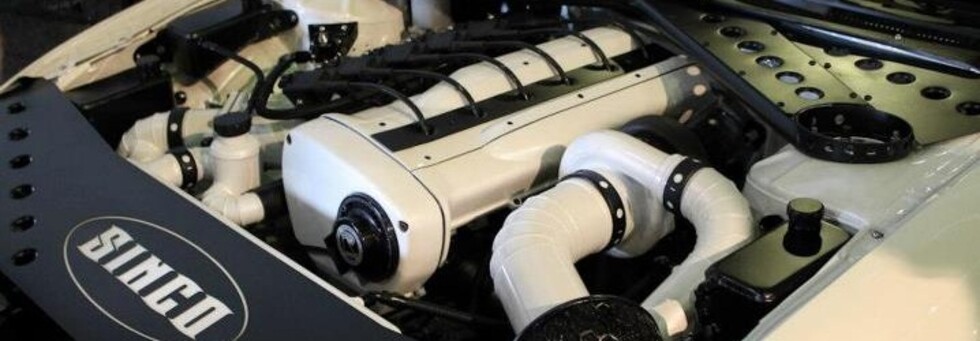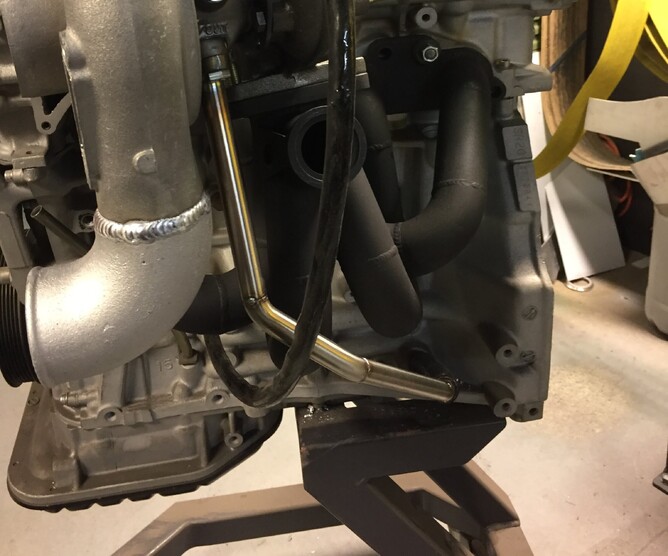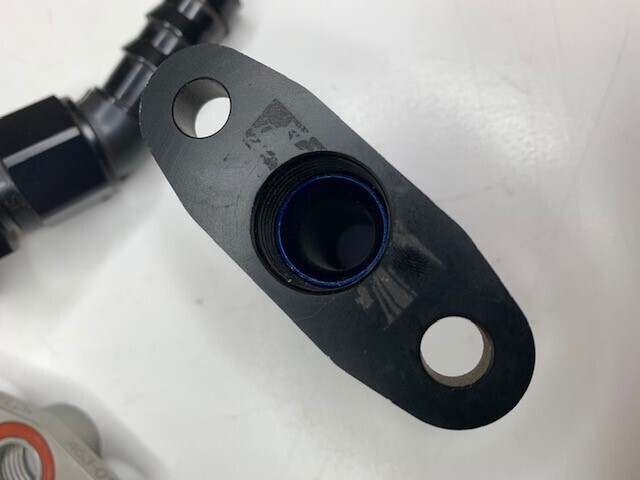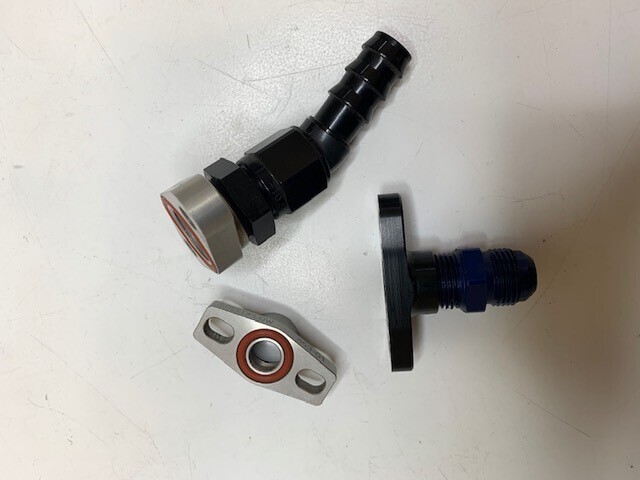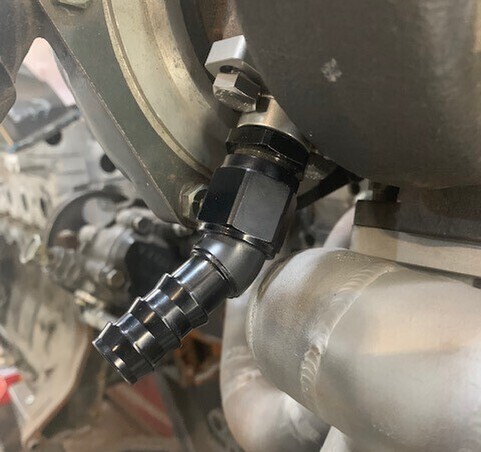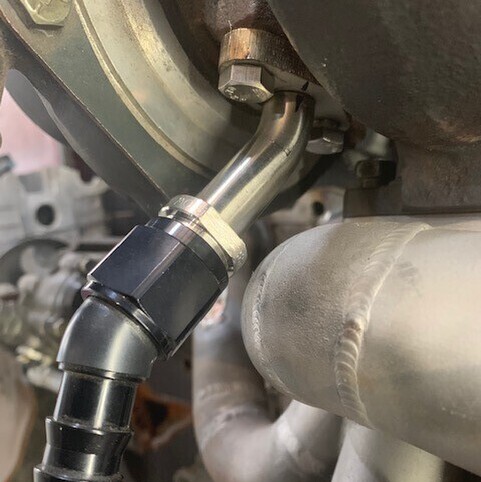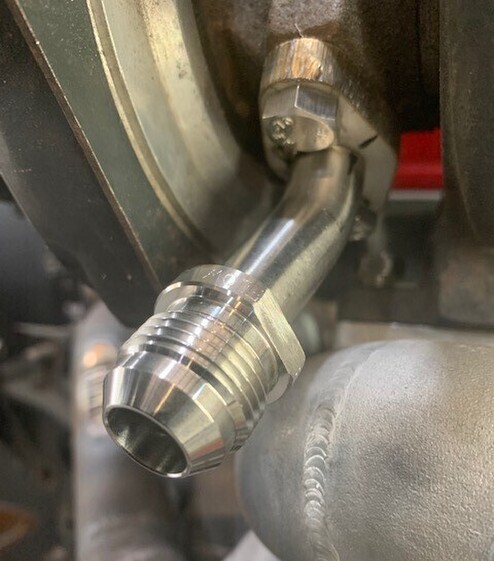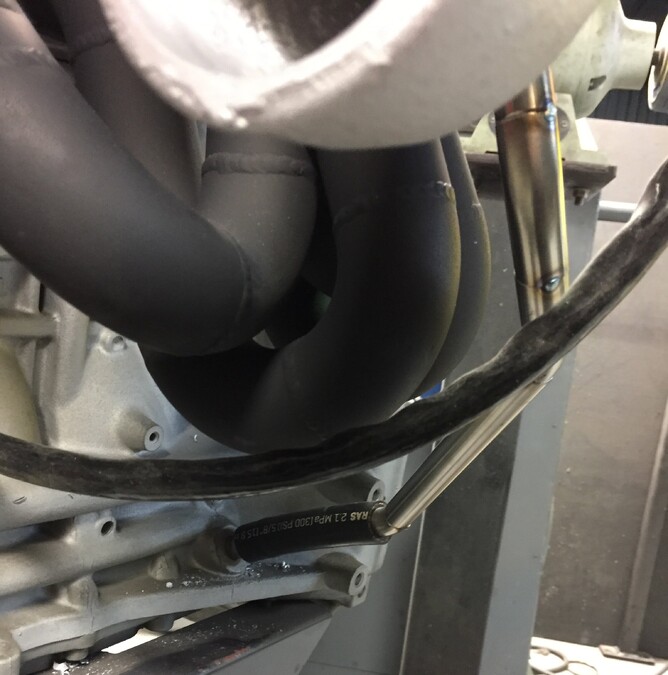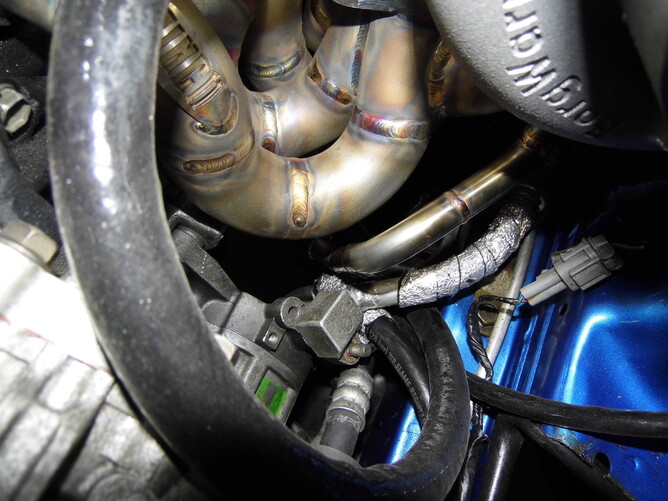Understanding oil drain fabrication......
We get a lot of questions regarding oil drains by people saying there drain line is to close to the manifold runners & waste gate ports etc. This would be for the guys running a top mount manifold by the way as low mount you will not have to clear the runners, but the following info can still help in general. So we are going to get into how we fabricate our oil drains when we are setting up a manifold & turbo in our shop.......
Will start by saying with tubular manifolds they do take up alot of room and the runners of our manifolds are long and sometimes there isn't much room between the runners and chassis rails so I will admit that, but there is always a way around that issue.
The problem we see the most is the fittings available for drains that are an "off the shelf" item. Pictures below show a flange with a thread. These are designed for a 1/2" or 3/4" fitting to be fitted to it. In a ideal world they work great with heaps of room everywhere etc etc, but no that is not reality all the time. These types of flanges have x2 main issues:
1. The thread is 1/2" but this is a od measurement of the thread so the actual id of the hole can be reduced down depending on the brand of the fitting, so it pays to check this size. Sometimes this can be drilled out to a bigger diameter (you will need to make sure there is enough thickness on the fitting to drill it out)
2. When you thread an adapter into the threaded flange it becomes very long, then add a -10 45 degree fitting onto that-still trying to get clearance to access it with a spanner and you will have a big issue of the angle of the center housing of the turbo.
Another challenge with the -an fittings is there are limited angles available i.e 30,60,90 degree but a lot of the time you may need 17 degrees (for argument sake).
Where to start??
The main factor to consider with your oil drain is to achieve as less of an angle as possible on the center housing of your turbo. Generally turbo manufacturers recommend no more than 15 degrees. When the angle of the drain flange is to great the oil can not drain away fast enough out of the oil gallery and this can cause oil to bypass the bearings and oil to pass through into your exhaust housing/exhaust which will cause smoking issues under idle and also under boost depending on how restricted the oil is.
In the pictures below we show the difference between the fabricated tube section of drain compared to the -an fitting and threaded flange and how this can effect the angle of the center housing of the turbo.
A great trick to get your oil drain clear of any pipes is to fabricate a small starter section using tube bends, using these bends can allow the angle of the drain to be reduced greatly because of there slim design compared to a bulky -an fitting.You can either run the solid tube bends down the whole length of the oil drain or you can just do a small starter section and add a -an weld on fitting to it like the photos below.
